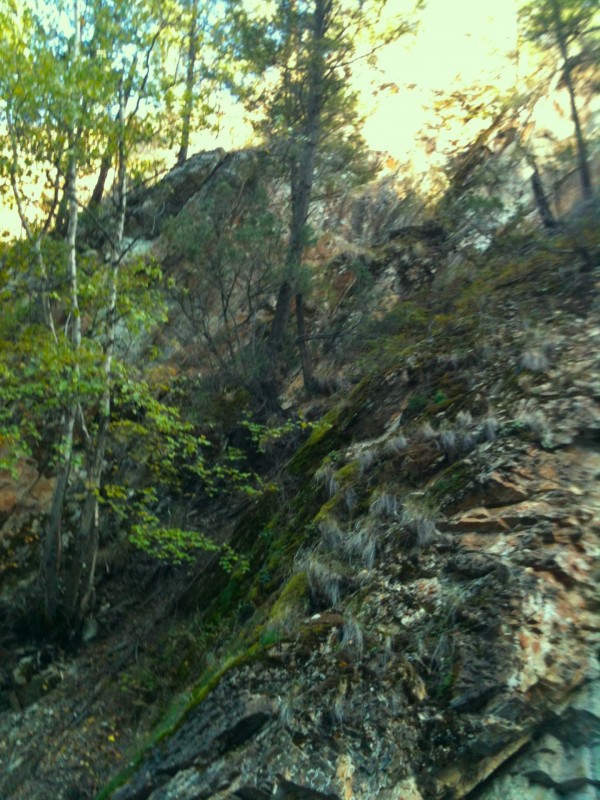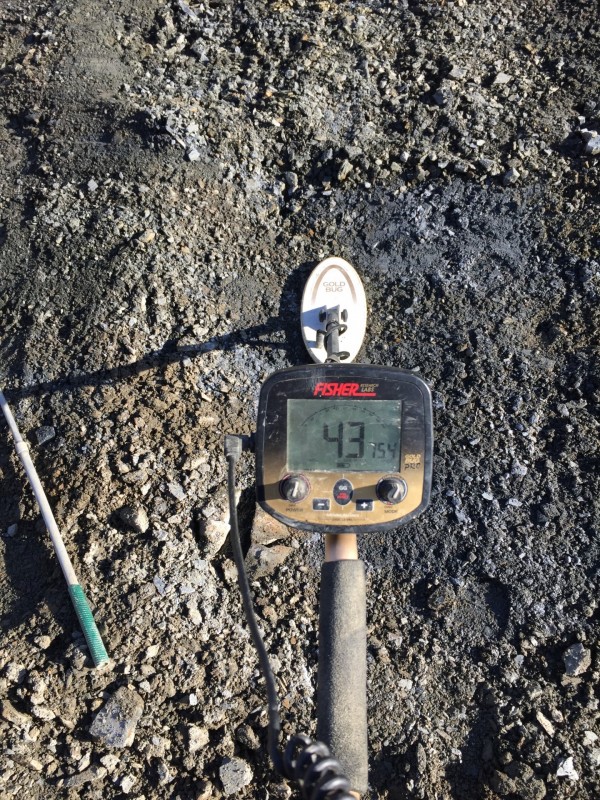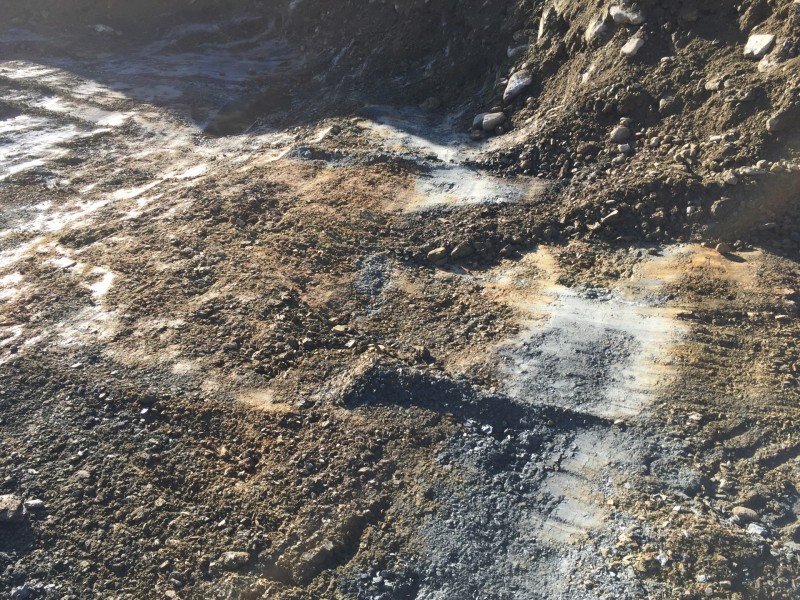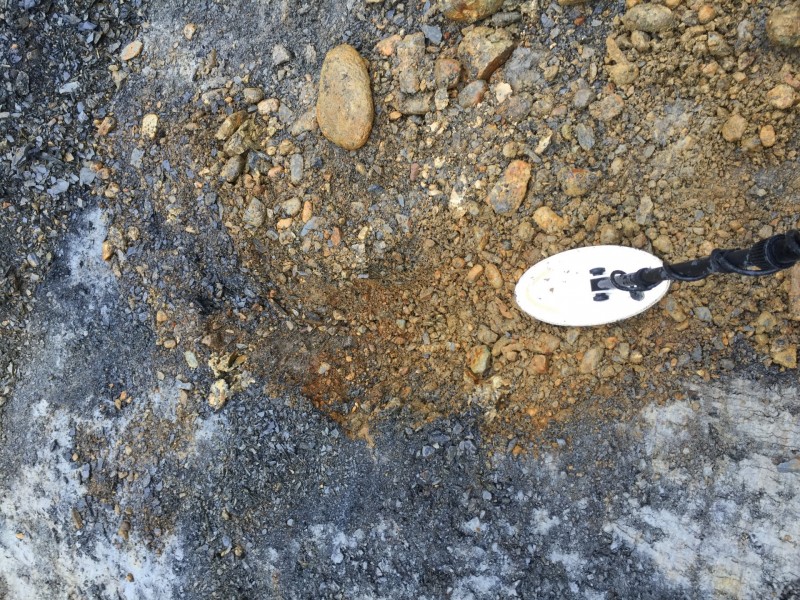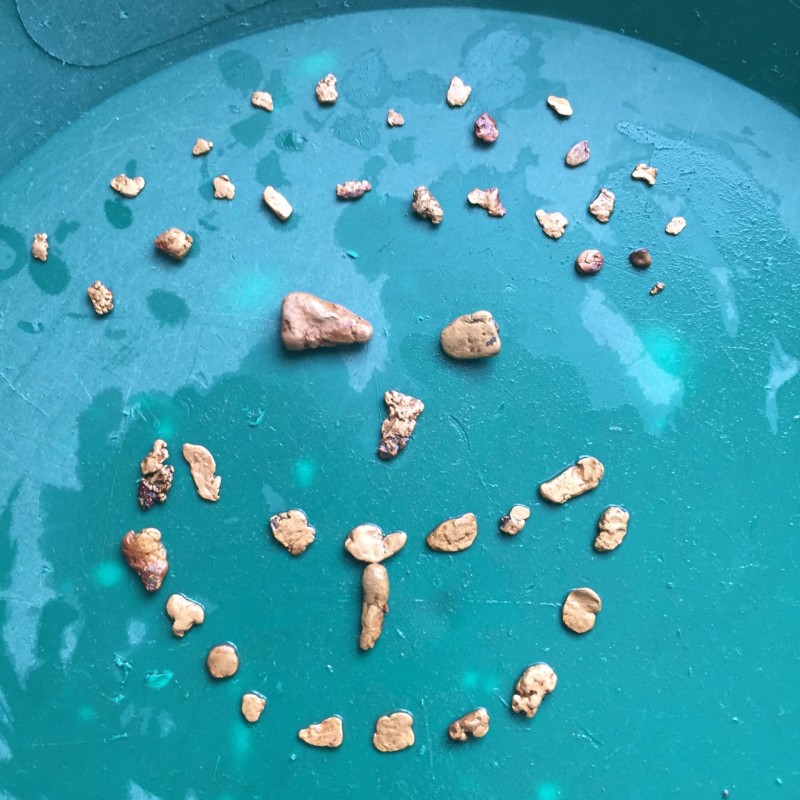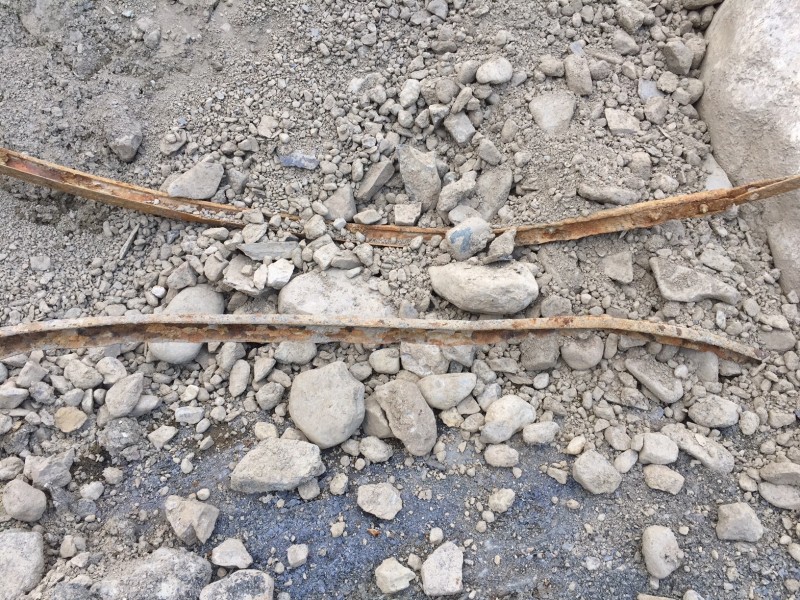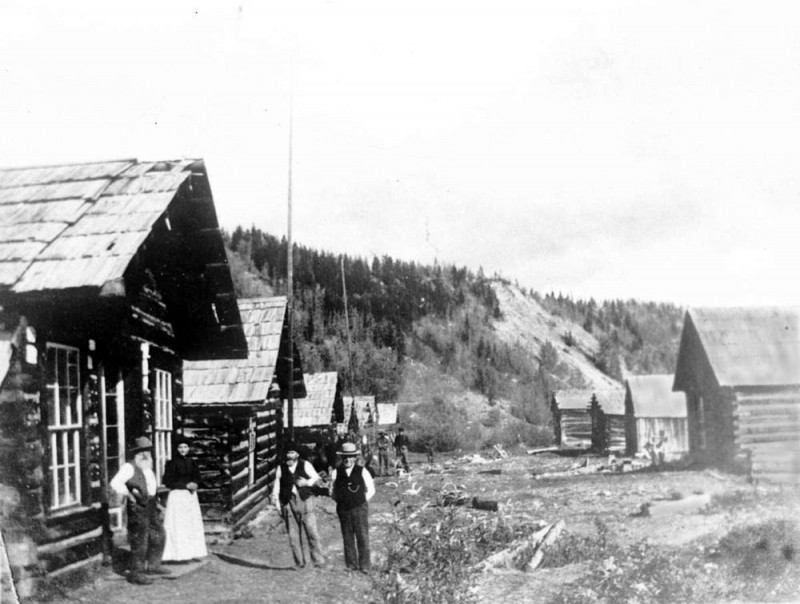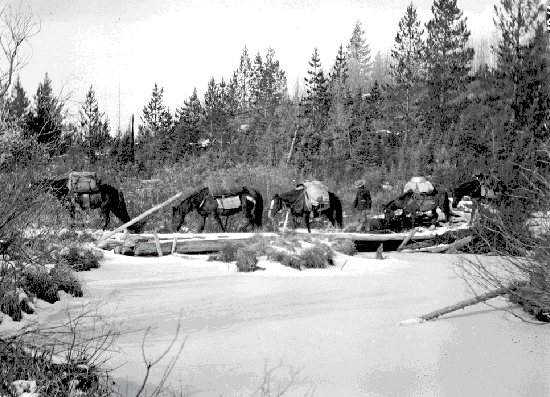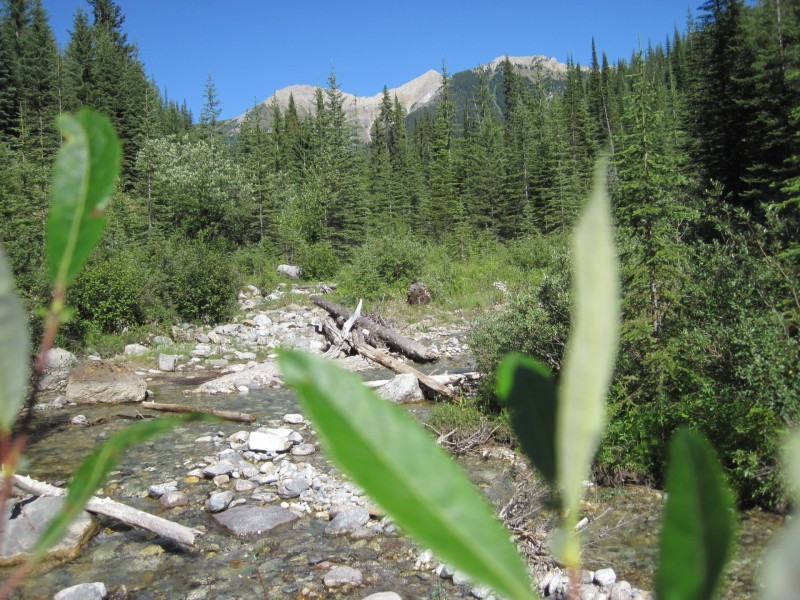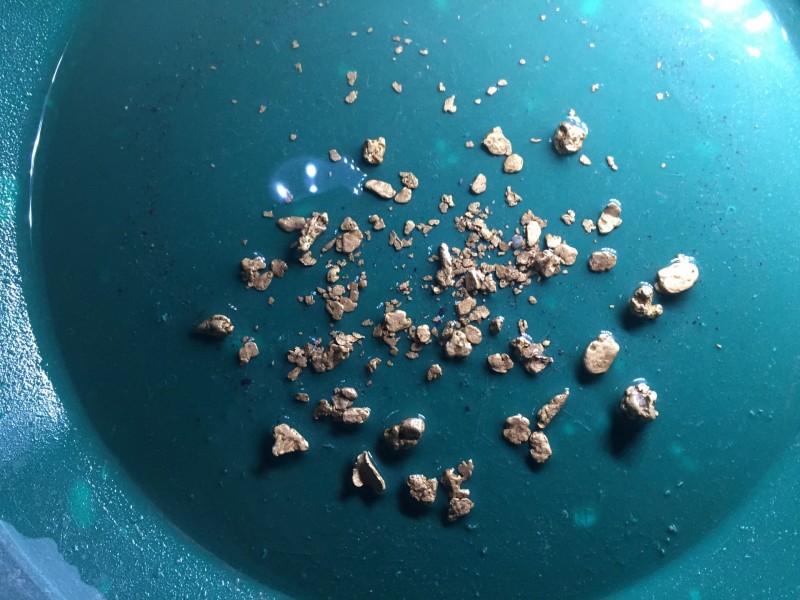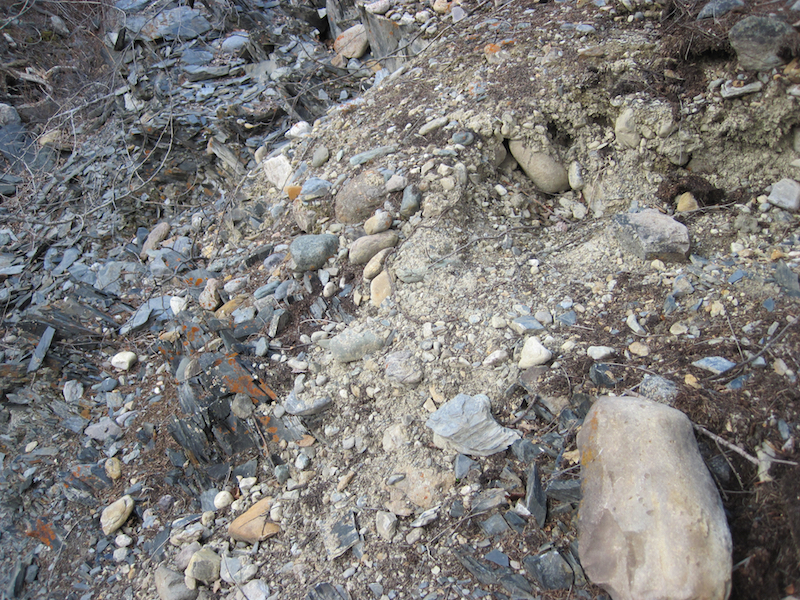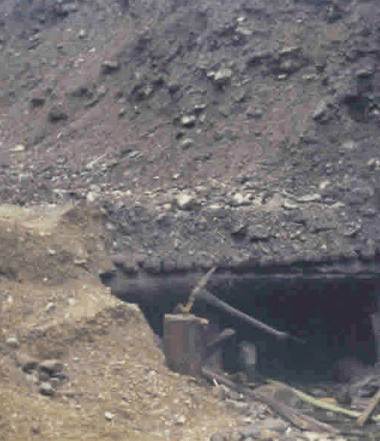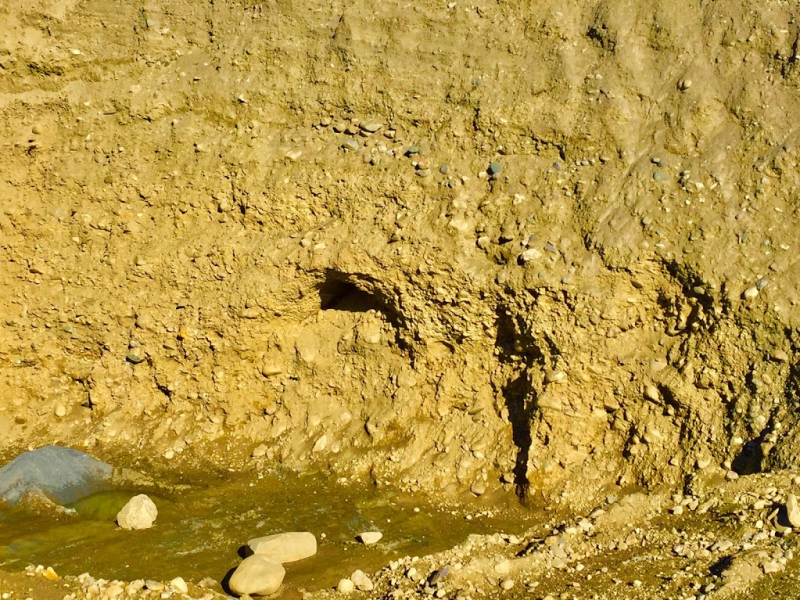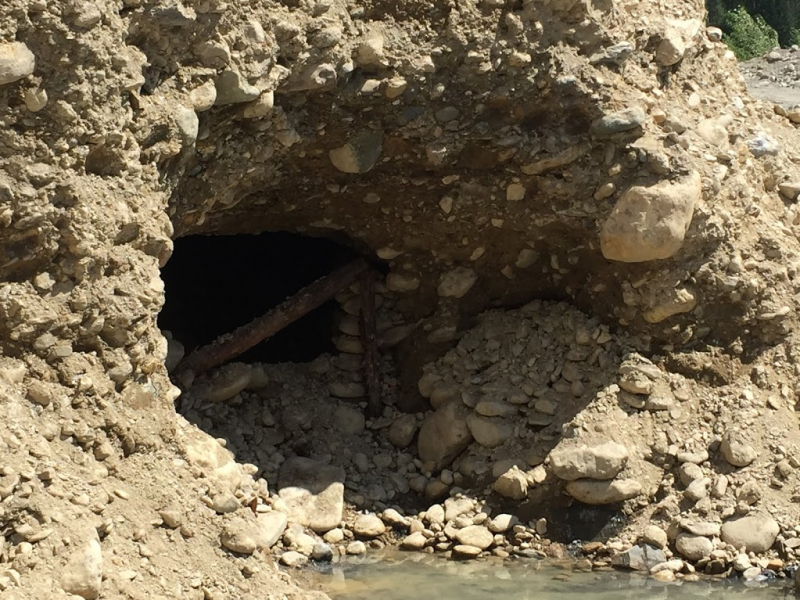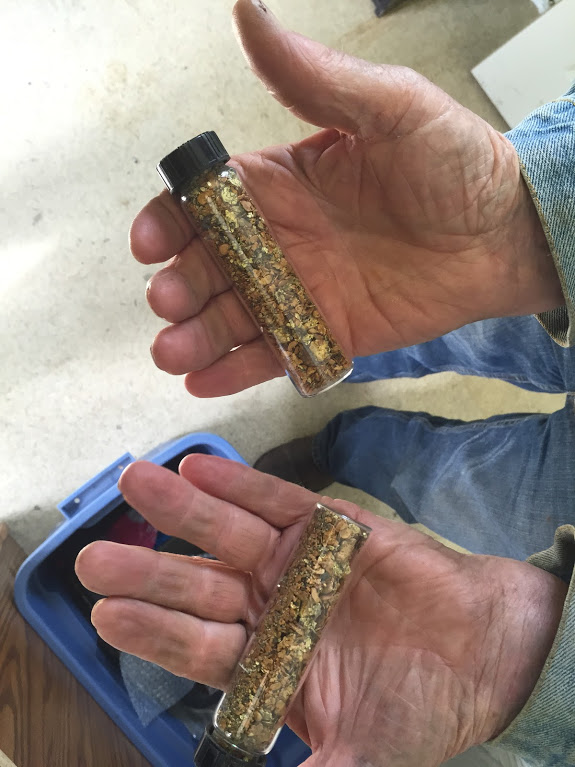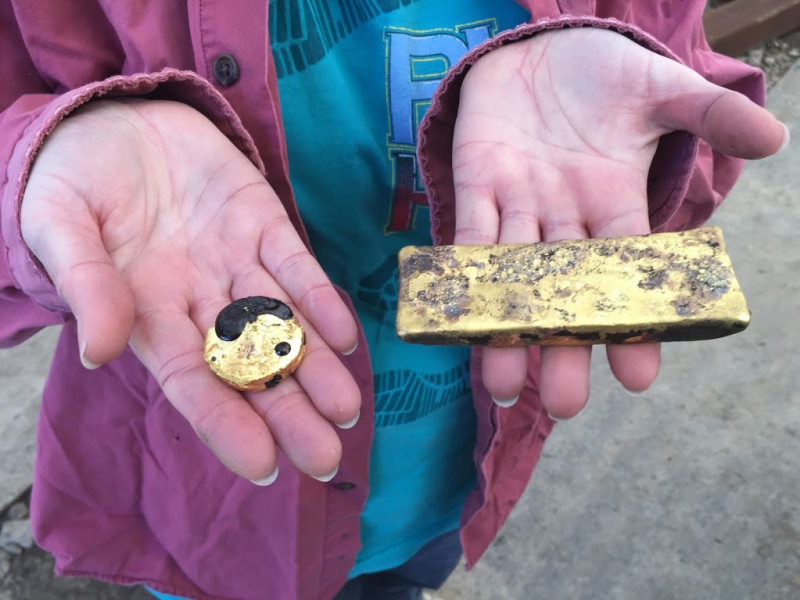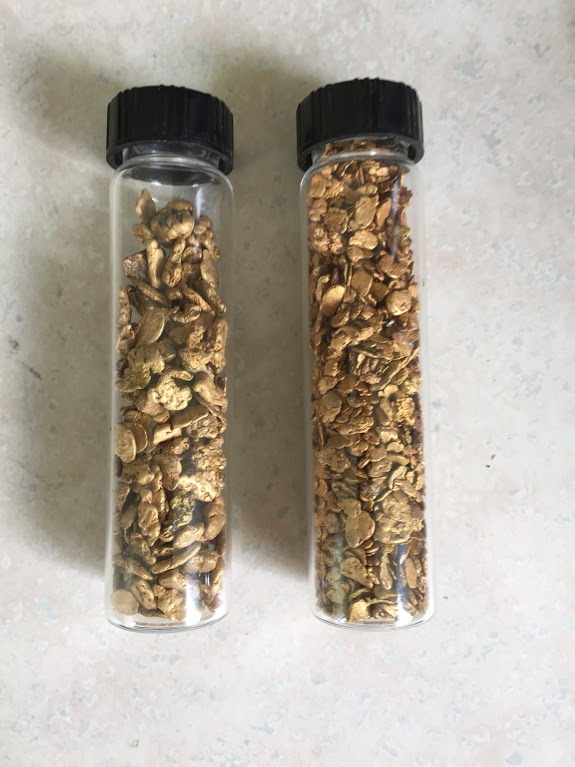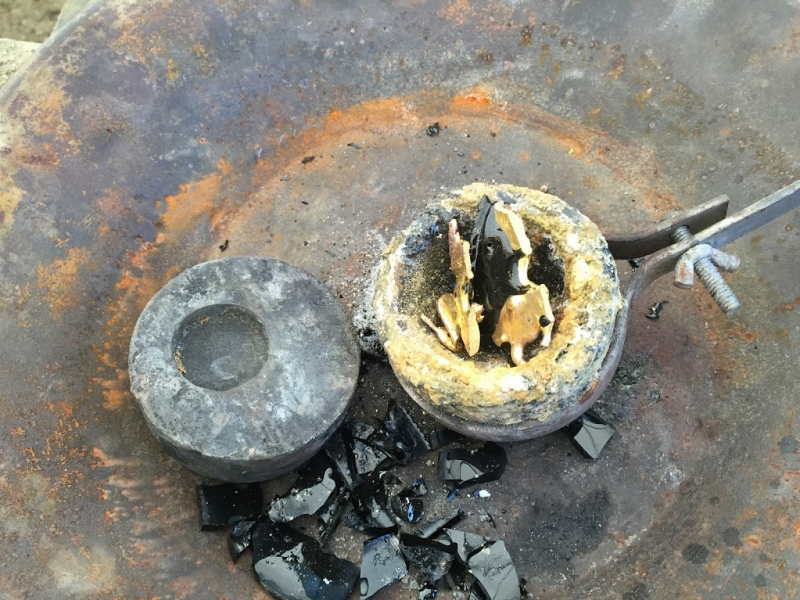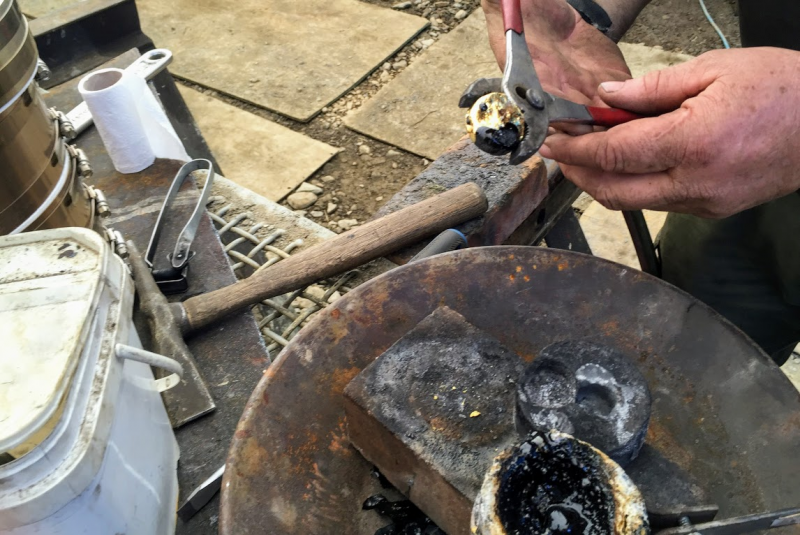-
Posts
793 -
Joined
-
Last visited
Content Type
Forums
Detector Prospector Home
Detector Database
Downloads
Everything posted by Lanny
-
Simply amazing . . . What an incredible series of adventures you've had Steve, and I love the pictures you've added which only contribute to the richness of your stories. There are a lot of little tips sprinkled throughout, ones that are worth noting for later recall. I loved what you wrote, and you have a nice, relaxed writing style that is very comfortable to read. My hat is off to you for the excellent job you've done while reliving your memories. Thanks again, and all the best, Lanny P.S. I'll have to come back later to add likes as I'm out of "likes" again for the day. (That just lets me know how much good suff there is on this site to like!)
-
Learning a lot of good things on this thread--very interesting, lots of great tips! Thanks to all for posting, and all the best, Lanny
-
Bedrock Tips:How many of you have had the chance to work virgin bedrock? By virgin, I mean that the bedrock has been exposed by modern mining. In other words, the bedrock has not seen the light of day since the gold was originally deposited on it or in it eons ago. Moreover, a chance like this is a rather rare opportunity because it requires prior connections with the miners in order to have access to this bedrock. After all, it's very expensive to remove the stubborn overburden to expose the mother rock. Furthermore, some miners are very sensitive about allowing anyone access to their virgin bedrock for any reason at all, if ever. It's a bit of a loaded request, even if you already have a personal relationship with the miners. So, if there's no prior relationship, the chances are slim to none for access, and even if you do have a relationship, the answer could still be no. You have to be ready for any eventuality.However, if and when you do get the opportunity to work such bedrock, there's a few things that will help your chances in finding any residual gold left behind from the mining activity.First and foremost, ask questions. Find out where the heaviest run of gold was in the pit. For example, find out it the deposit was heavier in a dip in the bedrock, on the start of a rise, on a shelf, at the bottom of a long drop, etc., and find out if there were certain colors in the dirt that indicated better pay: oranges, reds, grays, purples, blacks, etc. With the answers to a few questions like these, you can improve your odds of checking the most-likely places in a large excavation. For instance, you'll find areas that were barren by asking like questions (areas of loose wash, etc.), and you'll locate areas that were hot spots by doing the same.When it comes to detecting, you'll need to pay careful attention to the answers to your questions plus you'll need to pay close attention to what the detector is telling you about the temperature of the rock you're hunting. For example, if race into the pit and start swinging like a madman to cover as much ground as possible in the shortest time, you'll be doing a disservice to yourself. Why? Virgin bedrock demands respect, and it demands a slow approach while listening to the ground minerals and scrubbing the surface to obtain every cm of advantage while listening carefully to the tiniest alterations in the threshold. As well, by paying close attention to the mineralization, you will learn which coils will be most beneficial, including which size of coil to utilize. (A variety of sizes may be necessary to do a proper job, and in extreme ground, the wrong coil type will be an extreme waste of time.)As to the bedrock itself, you may wish to employ a tiny detector like the Falcon to find streaks and runs of fine gold that will elude your bigger detector's coils. It's surprising how much fine gold can be left on bedrock or caught in cracks. I had my eyes opened wide several summers ago to just how much gold gets left behind and just how much fun it is to use a tiny detector to chase pockets of fine gold!As for non-electronic sniping, it's very important to study the rock carefully. Often when working virgin bedrock, clay is a common occurrence. And, that clay is a great hider and or robber of gold. Moreover, look at what's riding within the clay. Are there little stones of various sorts? Is it just slick clay (no inclusions)?As well, be meticulous about examining the surface of the bedrock. Sometimes what looks like perfectly level bedrock with a solid surface may have cracks and crevices perfectly camouflaged by the minerals that are running within the clay, minerals that match perfectly in color the host bedrock. Use a variety of tools to scrape and scratch at the surface. I've been stunned while sniping non-electronically more than once by uncovering small cracks and crevices in this manner, ones that held a surprising amount of good gold.As well, if the bedrock is dry, get a good sledge hammer and hit the bedrock to see if any puffs of dust arise like little fountains of fine particles. This signals a crack or crevice. One of the wonders of bedrock is that a crack or crevice may be snapped shut tightly, but widen below its mouth significantly. I remember the first time I found one of these: it had a pocket of small nuggets in it, and the nuggets were far too big to have found their way into the crevice opening. There are lots of theories as to how this happens, but the important thing to remember is that it does happen. I've also found larger nuggets this way as well when sniping without electronic backup. What tools help with this process? For inexpensive alternatives, a blade screwdriver bent at a 90 degree angle; a wire brush; a stiff bristle brush; an awl; a pocket knife; a small metal gardening shovel; a variety of household spoons (teaspoon size to tablespoon--be sure to have sturdy ones that won't bend easily); a small sledge and a couple of cold chisels for widening cracks and crevices; if water is present, a suction gun of some kind; etc. With virgin bedrock, you will have the chance of a lifetime to find gold in a place that no one else has ever looked, so take the time to do a thorough job, and the reward can be great. On a connected note, I've come behind others that have worked such places in a hurry and found some beautiful nuggets (larger than anything they found) because they tore across the bedrock in a mad rush to cover the entire area. The sad truth is that if they'd have slowed down and paid that virgin bedrock the respect it deserved, they would have found the bigger gold instead of me. All the best,Lanny
-
To change things up a bit, every miner hears a story or two of lost gold while bumping shoulders with other miners. Here's one I heard way back when I was first learning how to nugget shoot. It's a tale of four miners that hit a goldfield when the location was producing coarse placer gold in abundance in the 1870's. The four miners had worked all summer at or right close to the discovery claim on a rich placer creek where they had excellent returns the entire season, and after their last clean-up just before heading out to beat the winter snows that closed the mountain passes, they decided they'd celebrate their good fortune.So, to compliment the wild game they were cooking, one of them went off and gathered some mushrooms for the feast. Little did he know that he was bringing death by way of excruciating pain and poison as what he naively believed were mushrooms were in fact a deadly imitation that doomed them all.Three of the unfortunates died quite quickly, but the fourth lingered long enough to bury the group's gold in a safe place (or so, that's what was believed, as no trace of their season's haul of pounds of placer was ever found). However, it is a possibility that the group had already cached their gold, and were planning to dig it up right before they left for the "outside". Regardless, a thorough search was mounted to find their gold to send to their families (many prospecting communities were closely-tied groups and looked after each other, especially when misfortune struck), but nothing was ever found except for the bodies of the four poisoned miners, the deadly fungus still evident in the leftovers of their meals. The bodies were buried on a bench below the discovery claim, not far removed from the stream that had fulfilled their golden dreams.Last winter I did some research on early placer mining, and I was quite surprised as I came across the names of two of the miners that died from eating the mushrooms. The names of the other two are, I believe, lost forever, and I believe this due to the memoir of a person that found the actual wooden headboards of the graves of the fallen miners!he information comes from an out of print book, an autobiographical memoir of an on-and-off placer miner, one that revisited the goldfields of the early 1870's during the depression years of the 1930's when many men were looking anywhere for a means to support their families and so returned to the back-breaking labour of placer mining in the remote northern goldfields. To quote from the memoir, "We and two other fellows were tracing an old buried channel [ancient placer] across country when we accidentally stumbled across those graves [the four miners]. The base of the wooden headboards had rotted, but two had fallen with the face down so we could read the carved names. One fellow named Shaw, came from New York City and had died on August, 8, 1871. The other was named Cook and he came from Hereford, England. He had died the day after Shaw [this would make him the man that had outlasted his fellow miners!]. We were unable to decipher the names on the other boards."So, I thought it was a fascinating find, to finally know two of the names of the mysterious four.As for those pounds of coarse gold, well, that's still an enduring mystery. All the best,Lanny
-

No Pick! Pounds Of Gold! No Comment!
Lanny replied to idahogold's topic in Detector Prospector Forum
An attempt at fake news? It seems to be highly popular . . . All the best, Lanny -
Thanks for taking the time to leave a note, much appreciated. All the best, Lanny
-
Amazing recovery of beautiful gold! Nicely done as you sure have some unique pieces there. All the best, and many congratulations, Lanny
-
That one was good for a chuckle, and I really needed one today too! Many thanks, and all the best, Lanny
-
Gold retrieved from friable bedrock by detecting. (When I'm in a patch, I power-detect: find a signal, scoop it, throw it in a plastic pan, keep detecting and collecting targets to maximize efficiency of time. I pan the "concentrates" when I need a rest or have finished working an area [darkness often interferes as bears are a real issue where I detect, as are cougars, so not a big fan of night detecting], and it sure is fun to see what all the targets were at the end of the day. All gold placed on the bottom of a full-sized gold pan. This is chunky gold.) All the best, Lanny
-
In the above picture, the bedrock is a black slate, with some of it being very hot to detect, but the beauty of working this bedrock that was hand-mined in the 1800's is that the bedrock is friable (no, not in a pan on high heat) meaning the bedrock is arranged in perpendicular sheets. You will see a reddish-orange colour centre-left of the photograph, and that piece of protruding bedrock is rounded from stream weathering many, many eons ago before it was buried to be preserved as an ancient channel. Slightly above it and to the left, you should be able to pick out plates (sheets, etc.) of bedrock leaning to the left. If you have any experience with this type of bedrock, there are spaces between each individual plate or sheet, and this is where the gold was trapped. The interesting thing is that sometimes the gold is down deep, and other times there's a heavy concentration on the surface and within the first three of four inches of the bedrock (depending on whether the plates continued deeper or were only arranged in a pattern over more solid underlying bedrock) with nothing farther down.However, once I started to use Minelab PI's, I had an advantage over other VLF users that had detected and hammered the bedrock before me as my PI's could see much deeper into any deeper or larger gaps, and I was able to retrieve many sassy nuggets that hadn't seen the light of day since the dinosaurs stomped across the ancient stream placers. Nevertheless, if you've never chased nuggets in such rock, it's a challenge as every time a sheet is pried open to get to the gold, it drops, then when you try to get to it again, it drops again . . . . Quite the exercise in patience by the time the nugget is finally corralled.All the best,Lanny
-
JW, Thanks for the welcome, and as far as the sassy gold saying goes, I'm glad you've latched onto it! I always wondered what happened to Wildcat. So, reading your summary of his disappearance, it makes me sad to know he didn't contact you to let you know his reasons. However, I guess your legacy of of gold-mining experience gained from him will always be with you regardless. Nevertheless, it's always hard, so I understand why it saddened you. I'm looking forward to your next nugget shooting post, and I certainly wish you all the best as you chase that beautiful gold of yours, Lanny
-
When I used to be able to dredge, it was probably the best visual example of gold sticking to clay ever, as when I'd uncover some clay, the running water would quickly clear the silt and the gold would then be exposed, stuck fast. I saw that many, many times. All the best, Lanny
-
Thanks for your kind words, and thanks for your remarks about the pictures, much appreciated. All the best, and right back at you as far as getting some gold goes, Lanny
-
Just thought I'd add something to this post for those of you starting out on the grand adventure of nugget-shooting: Clay Holds The Gold The key thing to notice in the above picture (of bedrock hand-worked in the 1860's) is the clay (tan-coloured material).Clay is a great grabber/holder of gold. It also creates a layer that when gold hits it, it sticks! (Clay is also a great robber of gold in sluice boxes, so it's a blessing and a curse, so beware.)But, when it comes to clay holding the gold, I'm not sure I can overestimate the value of this bit of information.I don't know how many times when either sniping or detecting I'll find a small amount of clay hidden in the bedrock that's still holding gold, especially small gold (sometimes the nuggets are fat and sassy too, don't get me wrong), but clay holds the gold.Now, understanding this holding value of clay goes a long way when it comes to prospecting for the precious metal.I recall many years ago hunting gold in a goldfield far to the north of where I currently live, and it was a major outing to get to that location (16 hours of solid driving), but the gold was indeed fat and sassy in that area, although the bugs were and are an ongoing deterrent; regardless, that's the place where I finally transitioned into a nugget shooter and started to actually find nuggets on a consistent basis (up to that point it was buckets and buckets of metallic trash). Moreover, the bonus of learning to find gold in that environment was due to the insane nature of the bedrock in that area: it annihilated the electronic capability of metal detectors! But I'd packed along a premier pulse induction machine as my secret weapon, and even then, it struggled to handle the bedrock, but in some locations it would at least see the gold in that nasty bedrock.However, I digress, and I'm pretty good at doing that, so back to the importance of clay.I was in the company of some large-scale placer miners, and they invited me to detect some virgin bedrock they'd uncovered. Nevertheless, the head miner told me the channel layer they'd removed (and I could see an intact slice of it off to the side) didn't have any clay in it (they called it "wash"). Well, at that time in my detecting experience, any mention of clay didn't mean much to me. So, I set up my machine and hit the bedrock, no gold! Afterward, back at camp, when I related my grim experience, the miners laughed as they said every miner understood that "clay holds the gold" and when there's no clay to hold the gold, it gets dropped somewhere else. (The learning curve of a rookie nugget hunter made me the butt of more than one joke I can tell you!)Later on in that trip, they invited me to detect an area where the visible channel on the side of the cut held lots of clay (the stones were arranged like they were part of a mason's wall, every stone held firmly in place by the clay), and wow, did I hit some nice nuggets! So, lesson learned, clay holds the gold. (The above picture is from the area, and the mine tunnel floor is tight on bedrock. It was uncovered by modern mining equipment. Lots of gold riding on and hiding in that ancient channel bedrock. The accompanying clay is very evident.) (In this picture, it's easy to see the abundant clay in the ancient channel [the boulders are resting tight on bedrock], and every rock is held firmly in place by the clay. The pay was largely in the bottom six feet of material.) In this picture, it's easy to see how the clay holds the rocks in this ancient channel (mine from the 1800's exposed by modern excavation, bedrock just under the water), pay in the bottom six to eight feet above bedrock. A peek inside one of those old tunnels, and look at how those Old-timers used the rock to stack up along the sides of the tunnel (bedrock cut down a ways as you can see on the right-hand side under the rocks, with an old mine-tie laying on the bedrock, rails all pulled long, long ago, plus no nails used in any of the lagging or timbers--all fine axe work for joints and fit, amazing actually.)To transition to another point, too much clay, as in a solid clay layer in a channel will also stop the gold. As part of the learning curve, I've experienced that before by punching right through that "armour" layer of clay that stopped the gold to dig (by hand) four to six feet deeper beyond the layer to hit the bedrock. However, I recovered no gold whatsoever! Through trial and error, I learned that the gold was back up with that armour clay and not below.To return to my photograph, the gold that day was in the previously worked bedrock where there were bits of clay still intact in the bedrock, but there was also gold in the throw-out piles the Old-timers had tossed aside in the 1860's as they didn't have the benefit of any electronic "eyes" to see what they were chucking aside.Clay holds the gold . . . .All the best,Lanny
-
Thanks! I appreciate you dropping in, and as I see you stomp the back-country areas of Idaho chasing the gold, it's like a time machine for me because Idaho (Placerville near Idaho City) was one of the places I chased the gold when my two sons were just kids, and for one of them (the oldest), it generated the love of chasing the gold that still burns bright today (as you can see from the pictures of the nuggets in his blue bowl [lots and lots of meaty, multi-gram nuggets]), so Idaho will always hold a warm place in my heart. All the best, and thanks again, Lanny
-
Jim, great to know what you're up to now, and good luck out there in the bush this time of year. Moreover, be careful as always as I know how quickly the weather can dramatically change during this cranky Canadian season. I have always treasured the friendships generated on T-Net with both of you and with Steve as well, thus my presence here on this great forum Steve has worked so hard to create, a new home so to speak. By way of reflection, T-Net was a bonafide gold mine of a place to meet great people then, and you and JW were superb examples of that high quality stock of fine people, as you still are indeed. All the best, and I'm looking forward to more of your superb pictures, Lanny
-
JW, chores are indeed the great equalizer when it comes to chasing the gold . . . . I too recall with a warm heart when the three of us used to animate the posts on T-Net with tales of chasing the gold, lots of fun and it was a great way to generate the friendships that still continue and to appreciate the talents you and Jim possess. As for the fall shots, no one puts on a better show than Mother Nature at that time of year, spectacular really, so thanks for your kindness about the photos, much appreciated. Looking forward to seeing more of your posts, and all the best, Lanny
-
Actually, any place you have to use your detector to "tune" your ear is an excellent place to start, and if you can hunt parks in your area, that's a great way to begin. I will add this though, Steve's advice about using various sizes of aluminium, down to tiny bits (like small gold size=very small too) will give you an exceptionally great chance to simulate what you'll actually be after, so a testbed is a solid idea as well. Moreover, if you live in Reno, shouldn't you be able to head out to the surrounding area and sprinkle those aluminum bits into some of your local ground? (I've never detected in Reno [been there a few times], but the geology of the surrounding area looked like it would likely produce some reactive ground which would be good enough to help with learning ground balance as well?) (Others from the Reno area can jump in here to comment about the soil conditions in the surrounding area as I'm no expert whatsoever.) All the best, and good luck when you do get to have a chance to go for the gold, Lanny
-
Nice pictures indeed! Thanks for posting, and all the best, Lanny
-
So, when I practice playing with the buttons and settings on my detectors, I just disconnect the coils, then there's nothing to overload. Moreover, for the detectors with a higher learning curve (lots of sub-menus, etc.), this is an excellent way to scroll through functions and learn the ropes (the settings, etc. with no access to any coil functions or metal detecting capability of course). All the best, Lanny
-

Equinox 15" Coil Goes Deeper Than I Thought - Big Gold
Lanny replied to Gerry in Idaho's topic in Detector Prospector Forum
JW, nice comments, and solid gold advice about the slight shifts in threshold tones that far too many nugget shooters ignore or discount or just fail to grasp the essential nature of. Your advice is the one defining difference that makes the difference. As for you Gerry, that must have been a blood-pumping, heart-pounding moment, indeed! All the best, Lanny -
Nice nugget! Sounds pretty happy. All the best, Lanny
-

SDC 2300 Scores 31 Ounce Gold Nugget
Lanny replied to Steve Herschbach's topic in Detector Prospector Forum
That really is a sweet find, one that would juice anyone up! Thanks for the share Steve. All the best, Lanny -
Just for fun: My old prospecting buddy, that's now in his late 80's, holding some of the golden goody fines some gracious miners let us heft before they transformed the gold. Some coarser stuff. Some of that gold added to some more of the take, transformed into some doré bars. The spillover goes back for another round . . . I'm going to miss chasing the gold due to the oncoming winter freeze-out. All the best, Lanny
-
Hi Jim! It's been too long. Great to hear from you, and I love your bedrock shot. In your role as the silver king, do you ever stumble across any gold specimens while out chasing the grey metal? Just curious, as I saw some dandy gold when I spent some time in Quebec. So, I also imagine that the scenery I witnessed on the Canadian shield (all of the little lakes, the forests, the beautiful streams, etc. are indeed similar to your beautiful Ontario, and I too see a lot of parallels to the mountain scenery we have here in the west, but without the high mountains, of course. All the best, and thanks so much for dropping in to leave your always appreciated comments, Lanny


